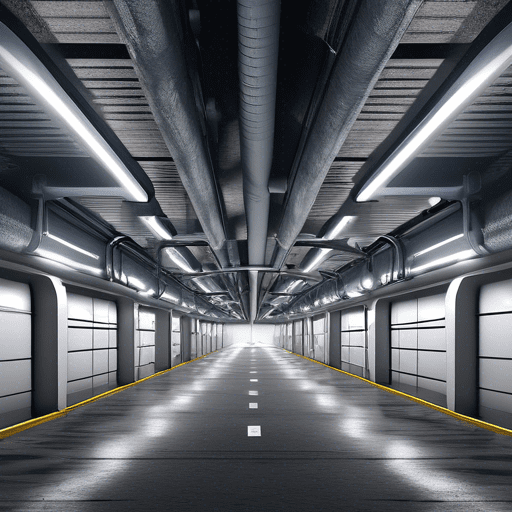Introduction Churches and other places of worship require HVAC systems that increase comfort, energy efficiency and ensure quiet operation. Unfortunately,

Enclosed parking garage structures are specifically designed for the storage of automobiles, especially in dense urban settings. More notably, these facilities have openings along 40% of their perimeter. For that, they still need mechanical ventilation to remove smoke in case of a fire accident and control pollutants produced during normal operations.
Traditionally, ventilation design for underground parking used ducted systems for these purposes. However, modern computational tools allow the design of lower-cost unducted ventilation systems. In this article, we’ll show you how you can use computational methods to design unducted ventilation systems in underground parking garages. Unducted systems offer several benefits such as reducing operating costs and managing the removal of pollutants. Better yet, you can optimize them for a range of fire scenarios in your parking garage.
Despite the rising popularity of electric vehicles (EVs), most of the vehicles on our roads today are still powered by petroleum. On the bright side, modern internal combustion engines burn cleaner than ever. Nonetheless, they still emit gases that are harmful to human health like nitrogen oxides and carbon monoxide. These toxic gases must be monitored and controlled when they rise above a certain level.
However, the primary concern of ventilation design for parking garages is to extract smoke in case of a fire accident. Studies have demonstrated that the main cause of death in building fires is smoke and not the effects of flame or heat. Smoke rises from the fire when an accident occurs in the facility and spreads horizontally along the ceiling. And when the space cools, the smoke falls from the ceiling, creating a barrier between the occupants and the fire escape route.
Therefore, it’s important to keep the fire escape route clear of smoke long enough to allow the occupants to evacuate the space, regardless of the location of the fire. The ventilation system design for the parking garage should be done in a manner that allows it to handle all the smoke in the facility to keep the fire escape route free of smoke.
Traditionally, the ventilation system was designed for the critical velocity of 3 m/s (10fps) for smoke control. So, when you’re creating a ventilation design for parking facilities, you should aim to induce a flow of at least 3 m/s (10fps) from the supply-air unit to the extractor fans.
More importantly, the extractor fans and supply-air unit should be placed in a way that allows air to always move away from the fire escape route when moving from one point to another. That way, evacuees will always walk away from the smoke caused by fire and against the flow of air.
Fire Regulations
The standards for the ventilation design for parking garages can vary significantly around the world. In the USA, the minimum requirements are established by the 2021 IMC (International Mechanical Code) using performance-related and prescriptive provisions. This code was developed with broad-based principles that permit the use of new designs, methods, and materials.
However, Section 15.19 (HVAC Applications) in the 2015 ASHRAE Handbook contains a fundamentally different approach to ventilation system design for parking garages. Specifically, the design approach proposed in the ASHRAE handbook is based on a calculation that takes average automobile emissions and estimated traffic into consideration. On the other hand, the International Mechanical Code design approach applies a fixed multiplier to either the volume or floor area of the parking garage. So, if the volume or floor area of the facility doubles, the required ventilation will also double.
All in all, both parking garage ventilation design approaches must meet the requirements for removing pollutants, in case of a fire, hot air, and smoke.
Conclusion
Ventilation systems for parking garages should be designed for both emergency and normal operations. In case of a fire accident in the facility, the ventilation system should keep the fire escape route clear of smoke long enough to allow the occupants to evacuate the building. And during normal operation, the ventilation system should progressively ramp up if the level of pollutants in the building rises above a certain level.
In general, the MEP design for parking garages is done using CFD simulations. This is simply a way of predicting the movement of air in the facility and determining whether the ventilation system will meet both emergency and normal operating-mode requirements.
To learn more about ventilation design for underground parking, contact Innodez Design & Engineering today. Our mechanical engineers will help you overcome various challenges of commercial parking by designing the ideal ventilation system that meets the unique needs of your parking facility in California. Besides, the effectiveness of the ventilation system for underground parking garages will profoundly impact the safety and health of the occupants.
About Author
Fate Ol